By Rick Bairett
Special thanks to subject matter experts Perry Needham, Ayrton Littel, Emilio Littel, and Larry Moulton for their valuable insights into kart racing.
Kart racing is a thrilling motorsport that involves getting small, but sophisticated, open-wheel cars around a track as fast as possible, while fending off competitors trying to do it even faster. It offers huge benefits to participants from all backgrounds and ages.
I witnessed my first kart racing on April 8th, during Race #1 of the Utah Motorsports Campus Kart Center (UMCKC) championship series. UMCKC has the only multi-configuration, pro-grade kart track in Utah, at over a mile long. In fact, the track hosts the Superkarts USA Pro Tour annually—June 9th – 11th for 2023.
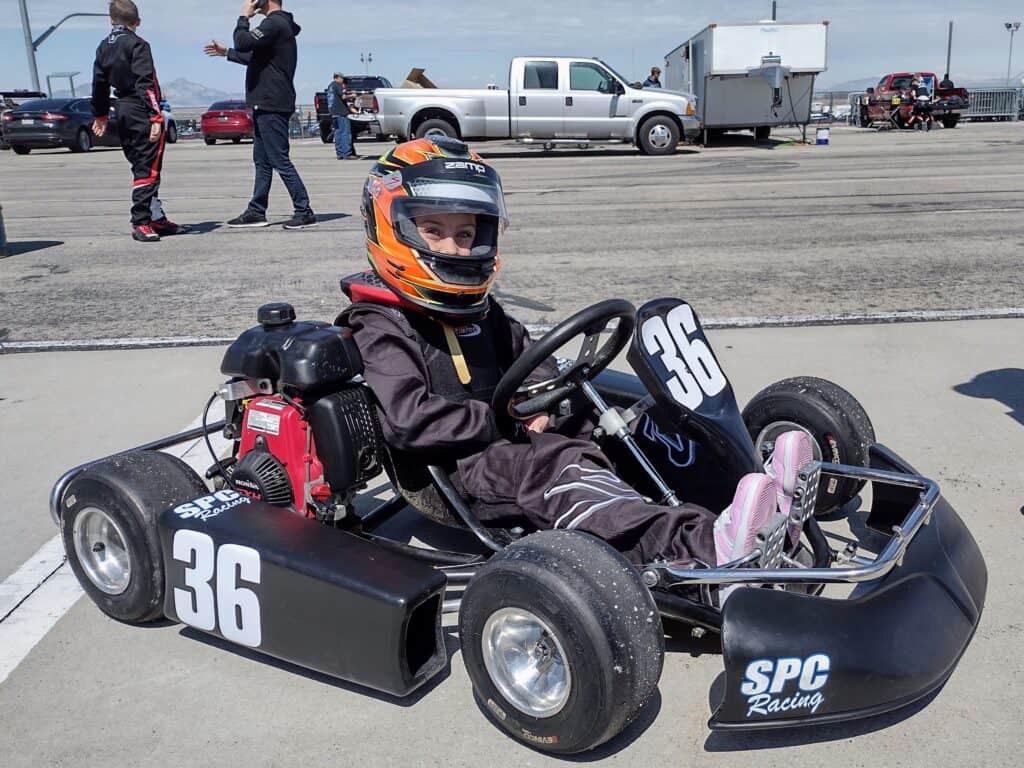
There were professional drivers there, but I mostly interacted with people of all ages and skill levels having fun! I chatted with drivers ranging from seven-year-old Cooper, racing for her first time in the Kid Karts class, to 78-year-old Larry Moulton.
Larry has been a Porsche Master Mechanic for over 50 years, and raced SCCA F-Production sports cars—mostly Porsches—for 30 years. Now he loves racing karts. He got into karting later in life when his son, Bonnier, did, and describes it as “great bang for the buck.” With his background, it’s not surprising that Larry dominated the Master 100cc class that Saturday.
When I asked what people who are unfamiliar with karting should know about it, nearly everyone said it’s like being part of a family. Everyone looks out for everybody else and is quick to help. Of course once the green flag drops it’s on and the competition is fierce. After a race, however, kids, teenagers, and adults are quick to give each other pointers and compliments. They even help locate replacement parts if something got damaged.

Advertise with UMN
Getting Started
Most Utah newbies start by working through one of three local sales and service centers: Scuderia Littel, Msquared, or Englehart Racing. All sell new and used karts, provide (and teach) service and maintenance, and provide driver development training with professional instructors.
I got to spend the day as a guest of Scuderia Littel—started three years ago by Emilio and Ayrton Littel—and to witness first hand all of the effort that team owners, professional instructors, mechanics, and of course drivers, put into a successful day of racing.

What struck me was that everything centered on helping young drivers become good, and good drivers become great. In short, to do as well as they possibly could on track. Technicians like Megan Ellis—an out-of-state college student who comes back to Utah to help with every race weekend—were scrambling to make sure karts were fine tuned and ready for the next heat.
One 14 year old driver, Steele Larson, had just moved up to the Senior division for 4-stroke engines and had been caught up in a heat-race wreck that morning. His dad, Bryan Larson, was scrambling to replace a bent rear axle and damaged wheel, and reassemble related components in time for Steele to compete in the afternoon finals (he succeeded!).

Advertise with UMN
At the same time, pro instructors Bruno Carneiro and Austin Versteeg were poring over kart data and video with drivers. The goal being to help them shave a fraction of a second, here and there, off lap times, to better defend against being passed, and to execute more successful passes. Meanwhile, team leader Ayrton was everywhere: coordinating all of that activity, helping locate needed parts, and monitoring schedule changes.
Scuderia Littel makes it a point to accommodate customers of all kinds. They provide all kart prep and race-day support for “show-and-go” customers, who just come to meet up with their karts on race weekends. For team members who want to do much of the work themselves, they also teach DIY mechanical skills.
Similarly, Scuderia Littel provides as much or as little professional instruction as customers request. Their goal is to open the sport to as many as possible, and to help their drivers be extremely competitive while keeping the emphasis on having fun.
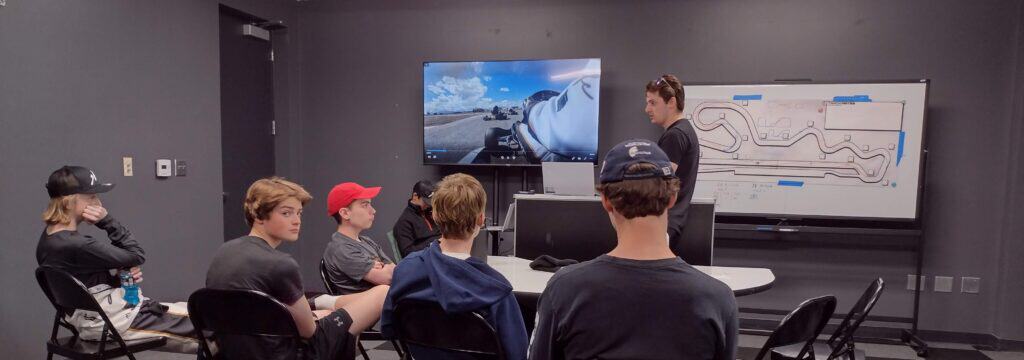
There are clearly advantages to driving with a team. Yet there were plenty of independent karts competing. Most were unloaded and prepped from pickups and trailers in the parking lot. Those independents—often family teams—seemed to form their own successful support community.
Karts and Classes
Kids as young as five can race Kid Carts (5 – 7 years), followed by Cadets (7 – 11 years), Juniors (12 – 15 yrs), and Seniors (14 years and up). There are also Masters, or adult-only, classes. Most of those groups are further divided into 4-stroke (206cc) and 2-stroke (100cc) engine classes, with the 2-strokes being more powerful and faster. Dedicated race engines are required, with few modifications allowed so power output is uniform for all competitors.
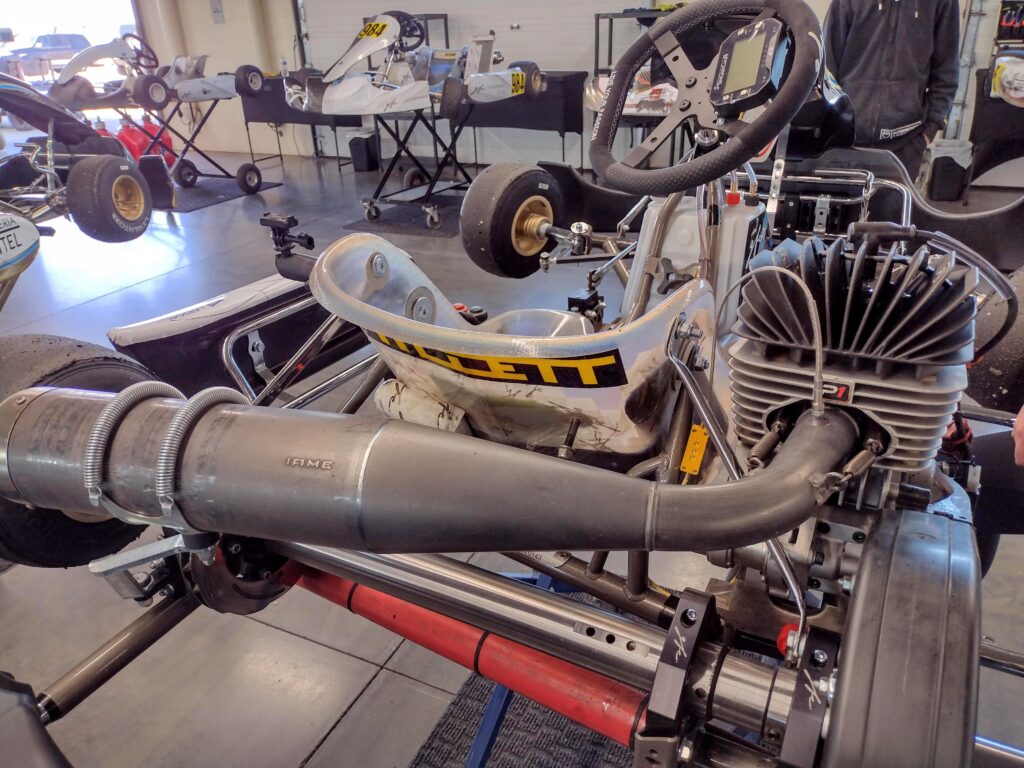
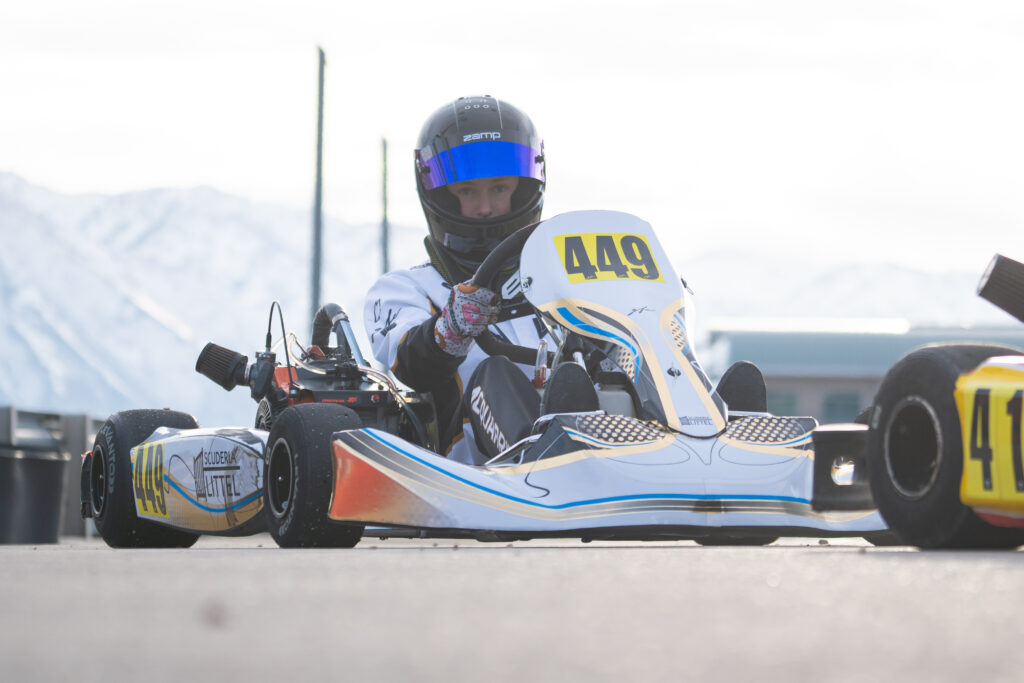
The most advanced group–with all adult racers from what I could see—was the Shifter class. Other classes’ karts are single-speed, with a centrifugal clutch to transfer power to the rear wheels as the engine spools up. Conversely, Shifters have six-speed manual transmissions. Those intense karts also use a more-powerful 125cc liquid-cooled engine and top speeds approach 90 mph.
It’s worth noting that all classes have strict minimum-weight limits, and that drivers with karts line up for weigh-in at the end of each heat. Those falling below a minimum weight are disqualified, so having the correct amount of fuel on board is critical. Weight costs speed, so too much fuel is bad, but drivers must have enough to make weight. Lighter drivers also attach ballast to their seats to make weight.
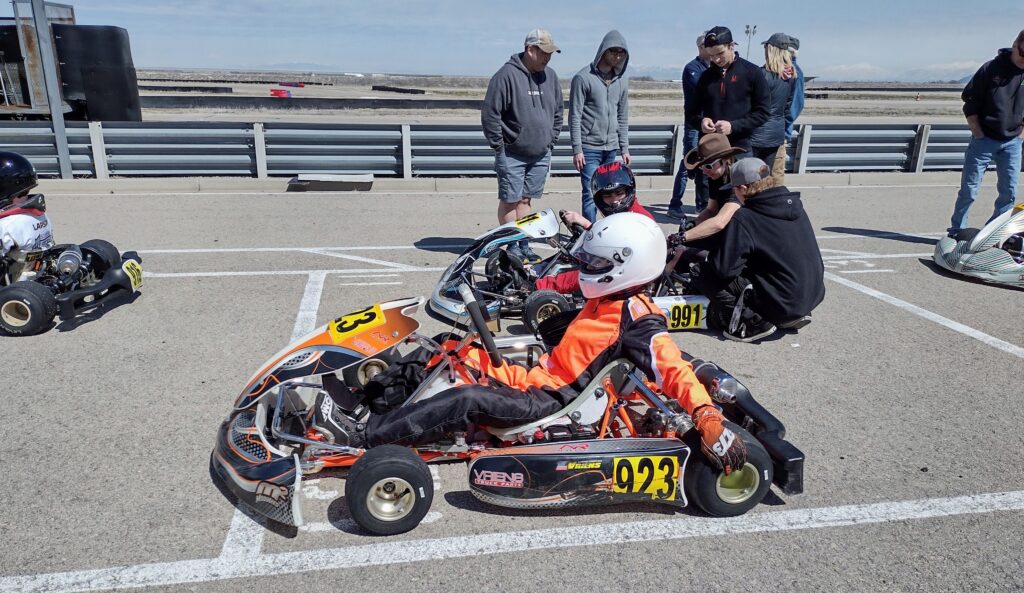
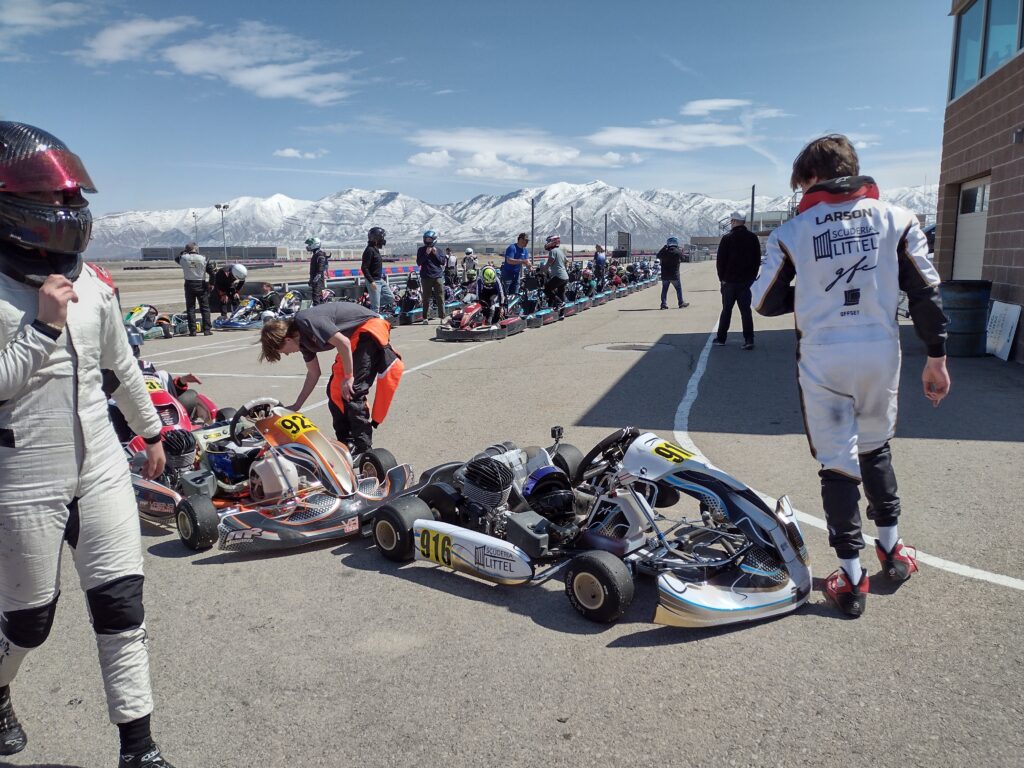
A typical electronics package includes a digital “dashboard” affixed to the steering wheel, a transponder to provide lap/segment times, and a small camera to record race video. All of which generate data used by race officials, drivers, and coaches.
The first season of racing, I’m told, can cost up to $10,000 for fully-competitive new equipment. However, a used, ready-to-go, entry level (4-stroke) kart can be had for as little as $2500.
Once equipped, tires, consumables, and race fees typically fall in the $1000 – $2000 range for the 10-race season. Perhaps more, depending on the amount of practice a driver gets in and how many replacement parts are needed. Racing is never cheap but those are far more cost-effective numbers than for many types of motorsports.
To test the waters without buying a kart, UMCKC also offers “Arrive & Drive” class competition on race days. For $100, Arrive and Drive racers compete against each other using identical rental carts, which have pretty decent performance.
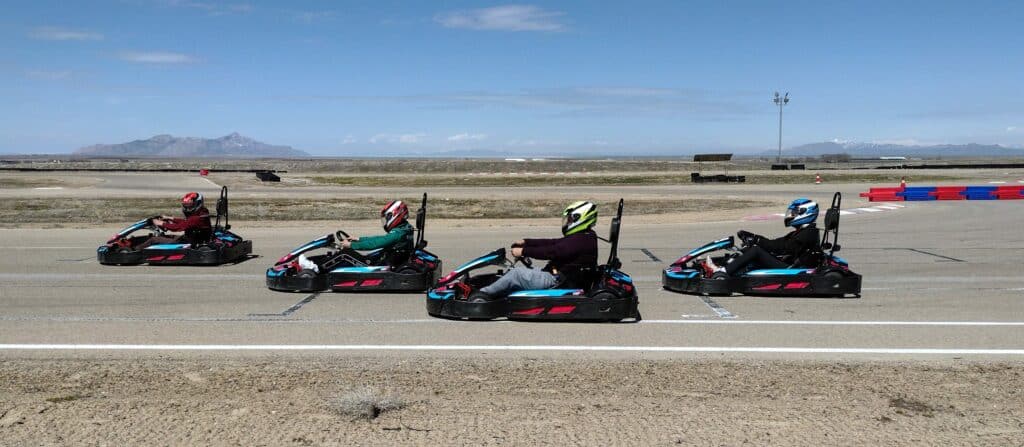
Pathway to the Pros
Clearly these karts are not what you built as a kid. The tech is amazing—a frame alone can cost a few grand—and driving them is something else entirely. These are serious racing machines that provide the basis for professional motorsports: a fantastic way to learn basic and advanced driving skills. Starting as young as five years old, karting enables young people and adults to become excellent drivers on the road and on track.
Pro driving instructor Perry Needham describes kart racing as underappreciated. Karting laid a solid foundation for many pro drivers—including several famous names in F1 and NASCAR—and many continue competing in karts to stay sharp.
Perry himself enjoyed great coaching from local teams and leveraged it into a successful karting experience that included multiple championships, wins and podiums. All of which laid the groundwork for similar success racing Porsche GT3 Cup cars.
Perry really enjoys seeing new drivers, and skeptical race drivers, experience modern karting to learn just how challenging and physical it is. With no suspension, drivers have to learn how to shift their weight and flex the kart to maximize grip in high speed turns.
At the sport’s highest level, shifter karts can outperform supercars in some scenarios! Several YouTube videos highlight karts’ incredible performance and show drivers of all ages thoroughly enjoying modern karting.
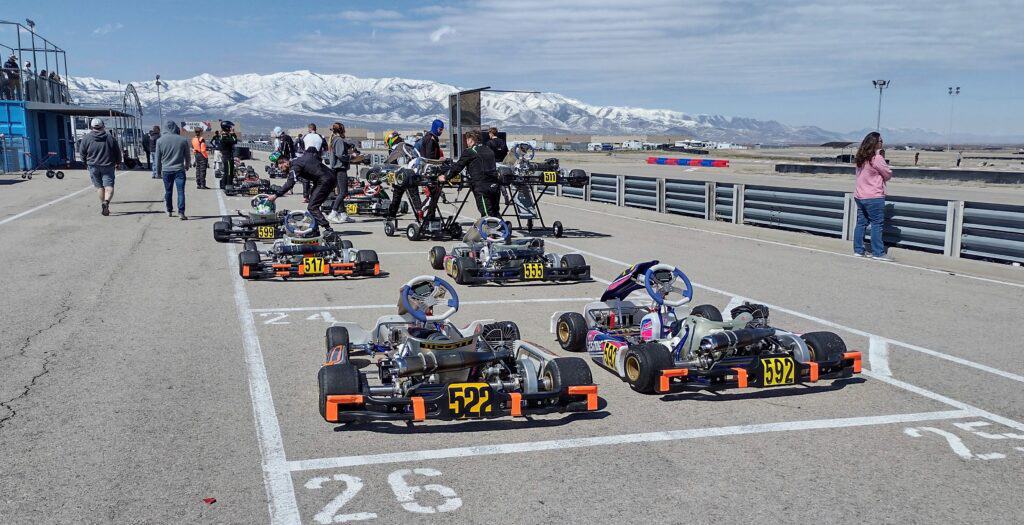
The Finals—UMCKC Round #1
UMCKC manager Chase Hadean describes kart racing as the closest thing to open wheel racing available at an affordable price, and watching the finals did remind me of Formula 1 racing. The vehicles may be miniscule, but the level of competition is not. Drafting and using the slingshot effect, clinging to the best possible line, and some impressive passing are all part of the spectator experience. Even better, spectators watch for free.
Winners included:
- Arrive & Drive, Silas Christian
- Junior 1 (4-stroke), Nico Gruber
- Junior 2 (4-stroke), Mia Gruber
- Junior 100cc, Gavin Wardle
- Senior 4-stroke, Collin Ruess
- Senior 100cc, Austin Isaac
- Master 4-stroke, Jeremy McKenna
- Master 100cc, Larry Moulton
- Shifter (125cc), Mike Beeny
Larry and Mike—both Msquared drivers and managers—are experienced pros in other forms of automotive racing. They take kart racing every bit as seriously, leave everything on the track, and it shows. Again, if you thought karts are a lesser form of racing it’s probably time to re-think.
I only got to interact with a few of the Scuderia Littel drivers. For instance, teenagers Luke and Lincoln Larson—experienced Senior 4-stroke drivers—were racing in the Senior 100cc class for the first time. Both finished close together in the middle of the pack: not bad at all for the first race of the season and first race in a more-advanced class.

After each final, I saw instructors enthusiastically reconnecting with their (mostly young) drivers, being pointedly positive about their accomplishments on track, and giving constructive pointers. I also got to witness drivers and instructors returning to the classroom and poring over data and video to make sure they are even more successful in Race #2 on April 30th.
The bottom line: karting seems like an amazing, and cost-effective, way to improve track skills, build awesome friendships, be part of a wonderful community, and to have a blast. Karts are the real deal!
© 2023, R Bairett
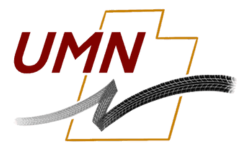

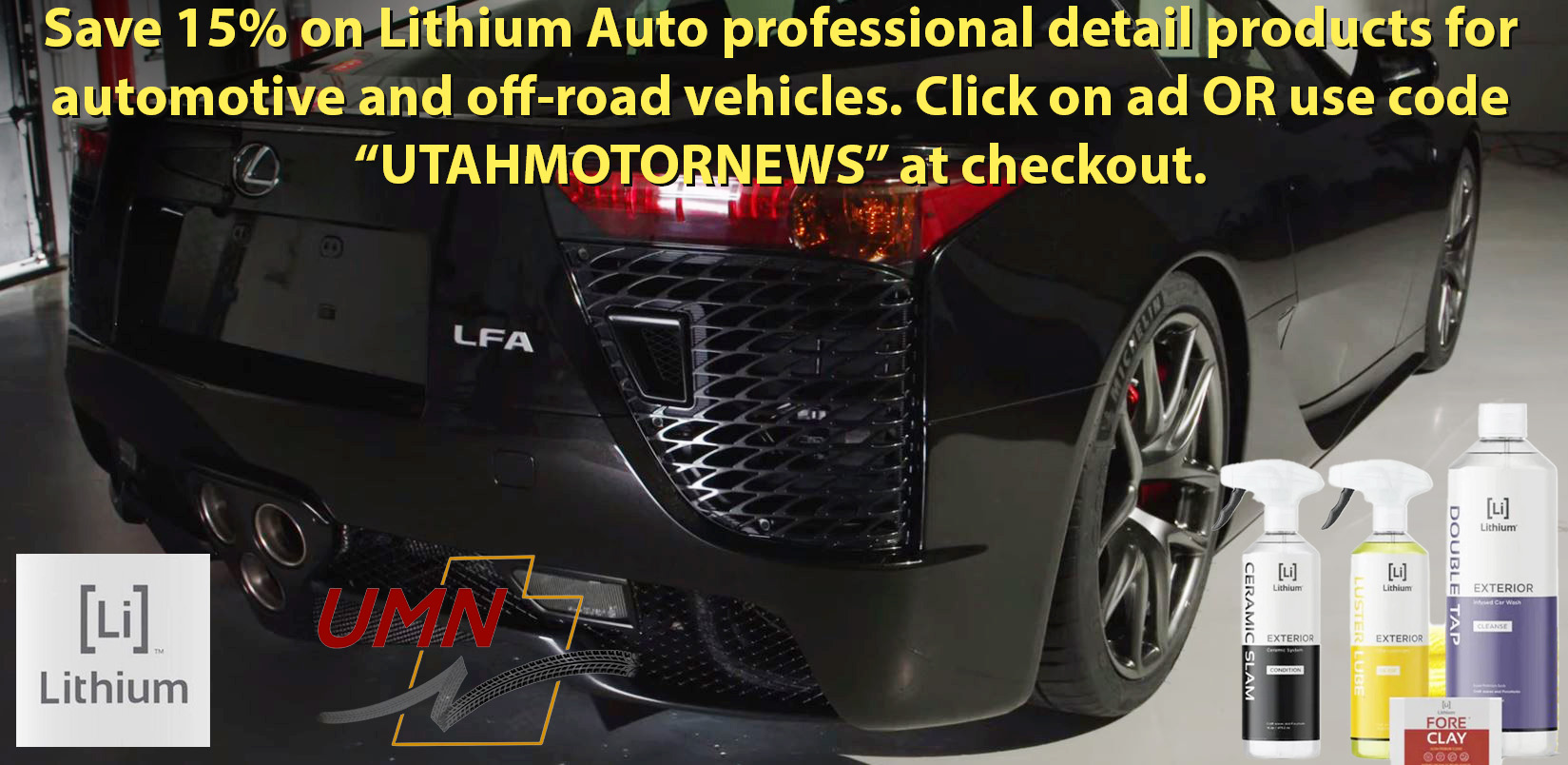




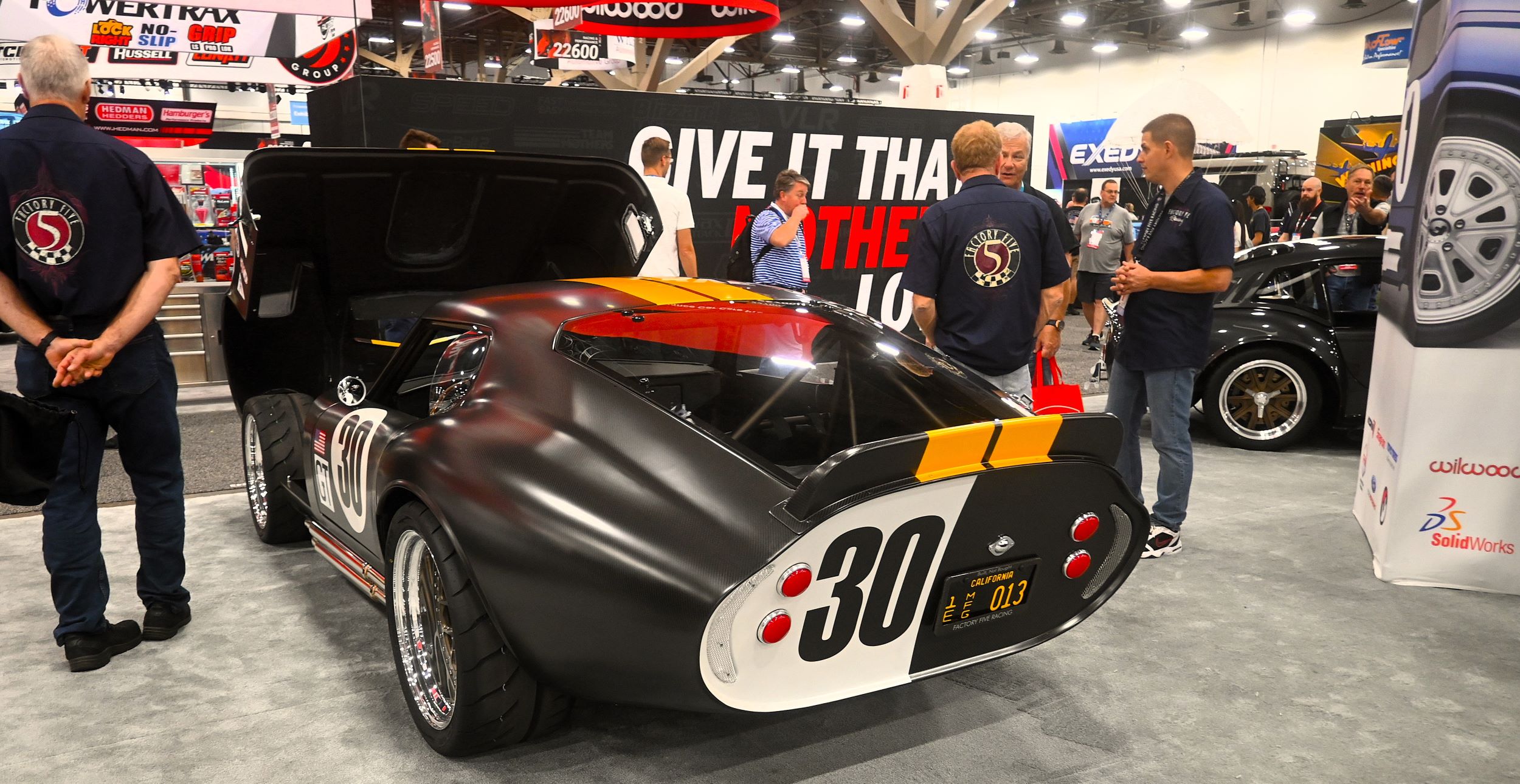
0 Comments